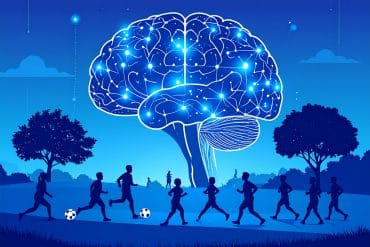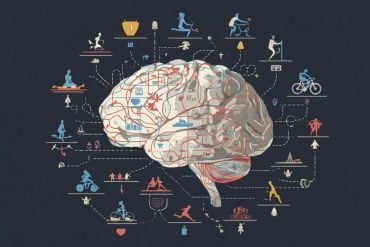Summary: A simple memory test can predict whether a person will experience cognitive decline and memory problems years in the future, a new study reports.
Source: AAN
In people with no thinking and memory problems, a simple test may predict the risk of developing cognitive impairment years later.
“There is increasing evidence that some people with no thinking and memory problems may actually have very subtle signs of early cognitive impairment,” said study author Ellen Grober, PhD, of Albert Einstein College of Medicine in the Bronx, New York. “In our study, a sensitive and simple memory test predicted the risk of developing cognitive impairment in people who were otherwise considered to have normal cognition.”
The study involved 969 people with an average age of 69 with no thinking or memory problems at the start of the study. They were given a simple memory test and were followed for up to 10 years.
The test includes two phases. For the study phase, people are shown four cards, each with drawings of four items. They are asked to identify the item belonging to a particular category. For example, participants would name the item “grapes” after being asked to identify a “fruit.”
For the test phase, participants are first asked to recall the items. This measures their ability to retrieve information. Then, for items they did not remember, they are given category cues. This phase measures memory storage.
The participants were divided into five groups, or stages zero through four, based on their test scores, as part of the Stages of Objective Memory Impairment (SOMI) system. Stage zero represents no memory problems. Stages one and two reflect increasing difficulty with retrieving memories which can precede dementia by five to eight years.
These participants continue to be able to remember items when given cues. In the third and fourth stages, people cannot remember all the items even after they are given cues. These stages precede dementia by one to three years.
A total of 47% of the participants were in stage zero, 35% in stage one, 13% in stage two and 5% in stages three and four combined.
Of the participants, 234 people developed cognitive impairment.
After adjusting for age, sex, education and a gene that affects a person’s risk of Alzheimer’s disease, APOE4, researchers found when compared to people who were at SOMI stage zero, people at stages one and two were twice as likely to develop cognitive impairment. People who were at stages three and four were three times as likely to develop cognitive impairment.

After adjusting for biomarkers of Alzheimer’s disease including brain amyloid plaques and tau tangles, the SOMI system continued to predict an increased risk of cognitive impairment.
Researchers estimated that after 10 years about 72% of those in the third and fourth stages would have developed cognitive impairment, compared to about 57% of those in the second stage, 35% in the first stage and 21% of those in stage zero.
“Our results support the use of the SOMI system to identify people most likely to develop cognitive impairment,” said Grober. “Detecting cognitive impairment at its earliest stages is beneficial to researchers investigating treatments. It also could benefit those people who are found to be at increased risk by consulting with their physician and implementing interventions to promote healthy brain aging.”
A limitation of the study was that most participants were white and well educated. Grober said more research is needed in larger and more diverse populations.
Funding: The study was funded by the National Institutes of Health, Alzheimer’s Association, Cure Alzheimer Fund and the Leonard and Sylvia Marx Foundation.
About this memory and cognition research news
Author: Natalie Conrad
Source: AAN
Contact: Natalie Conrad – AAN
Image: The image is in the public domain
Original Research: The findings will appear in Neurology






